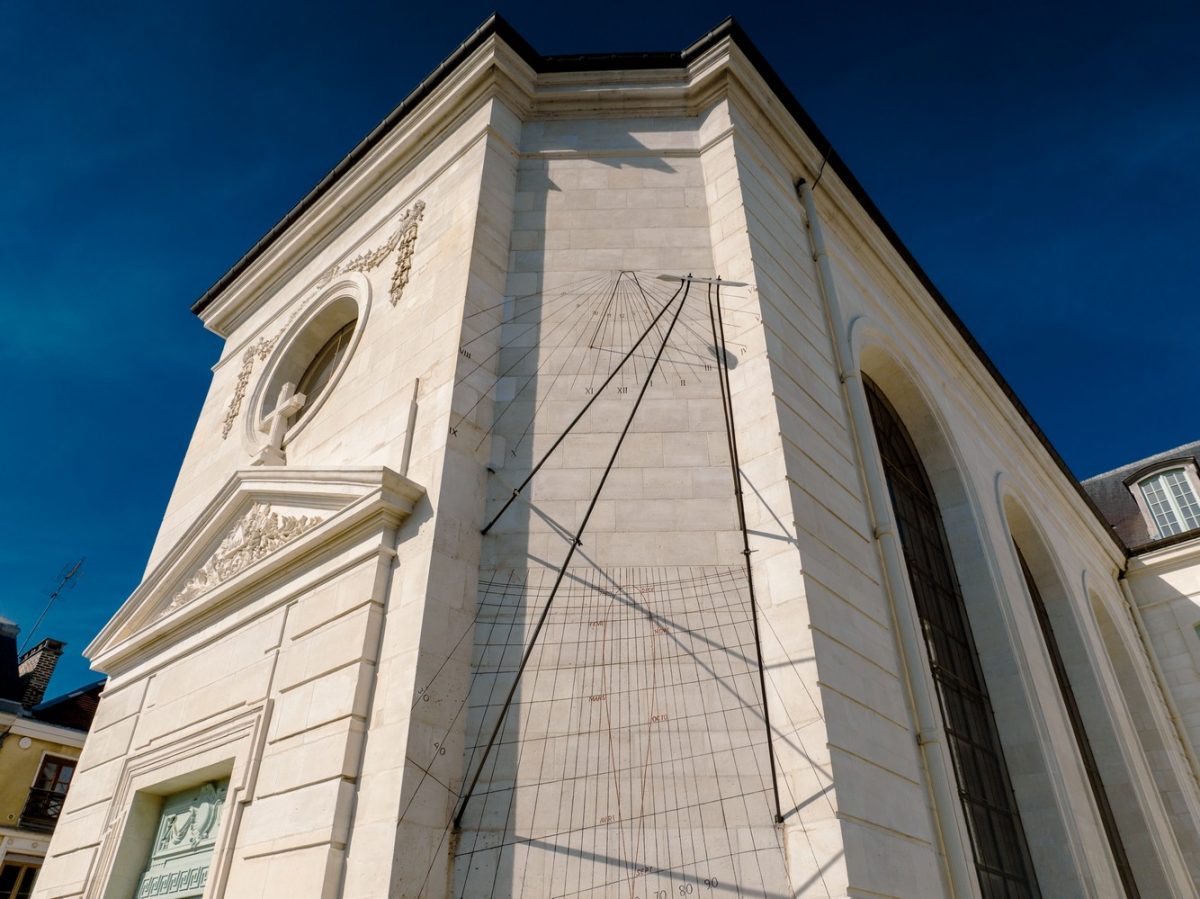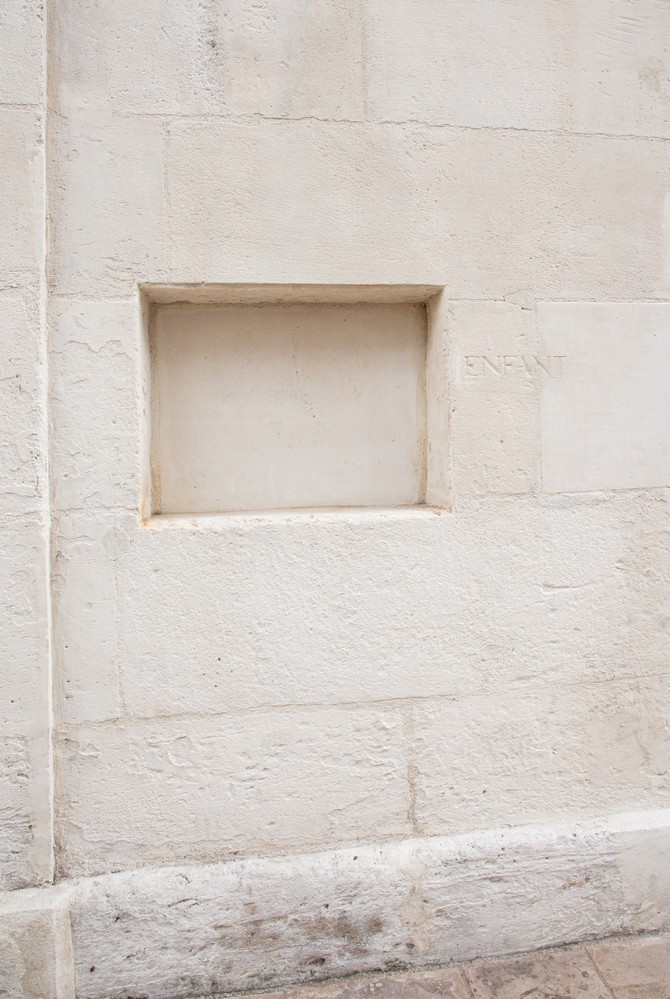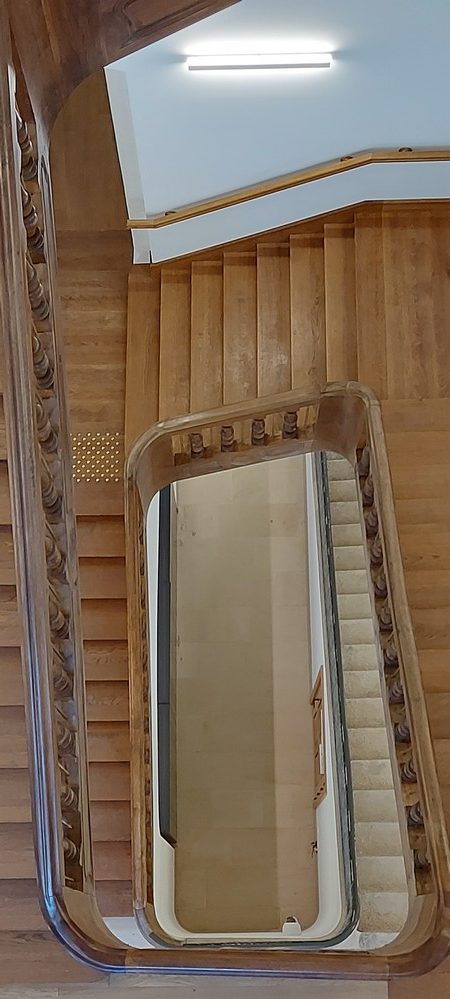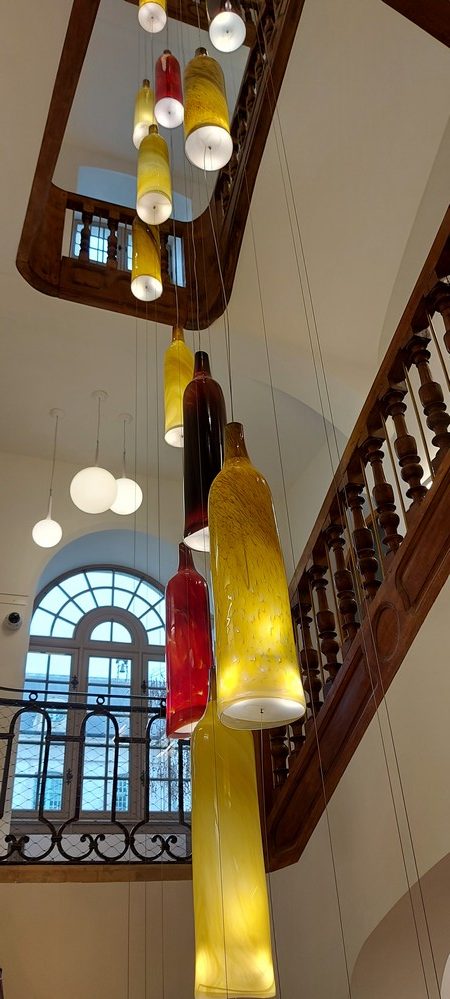Summary of the previous episode:
The “Cité du Vitrail” is installed in buildings dating from the 18th century and listed as historic monuments. They were entirely restored for the occasion.
The Hôtel-Dieu-le-Comte is a remarkable building in terms of its volume, luminosity and harmonious proportions, all of which perfectly showcase the “Cité du Vitrail”’s collections. It can be viewed through four elements that make up its construction and decoration.
These elements are: a sundial, a niche, a staircase and a chandelier.
The sundial
This might be the most striking feature of the building: a gigantic sundial that adorns the façade of the chapel. Measuring 11 metres high and 3 metres wide, it actually is a double sundial.
The top one shows local solar time. The lower one shows mean noon (conventionally set on a 24-hour scale) and true noon, which varies from day to day due to the inclination of the Earth’s axis of rotation.
In the past, it was used to set clocks. Designed in 1764, it has been completely restored for the needs of the “Cité du Vitrail”. This involved correcting errors made during a previous restoration, which led to the time being incorrectly read. But are we still able to decipher the time given by the sun?
![]()
© Studio OG ![]()
© Archives départementales de l’Aube
The niche
This is a rectangular cavity, the size of a large rubble stone, cut into the thickness of the wall in the street “rue de la Cité”. Made even more enigmatic by the inscription “enfant” (“child”) engraved in the stone beside it, this blind window reveals the existence of the former abandonment tower where newborn babies could be placed by women who wished to leave them to the care of nuns.
Rediscovered during the restoration works, this 13th-century niche is undoubtedly the most moving feature of the Hôtel-Dieu. It is easy to imagine these desperate mothers, furtive figures coming at nightfall to get rid of their unwanted children.
The staircase
When you enter the building, you will see a monumental solid oak staircase opening up. It leads up to the different levels of the “Cité du Vitrail”.
It is both the backbone of the building and the Ariadne’s thread of the visit. Contemporary to the Hôtel-Dieu, it was removed, renovated and reinstalled by specialist companies during the restoration works.
If you like to know the figures, it is 15 metres high, it has 96 steps and it weighs 4.5 tons.
![]()
© AG – Troyes La Champagne Tourisme ![]()
© AG – Troyes La Champagne Tourisme – Artiste : Alain Vinum
The chandelier
Indissociable from the staircase, the monumental chandelier is a link between the historic Hôtel-Dieu building and today’s “Cité du Vitrail”. It is an ad hoc creation designed by master glassmaker Alain Vinum, from Troyes.
Made up of 24 mouth-blown glass sleeves dyed in the mass, it looks like a cascade of yellow, brown and orange-red bottles raining down from the sky. The sleeves are reminiscent of the craft of stained glass making, for which they serve as the raw material. This design chandelier is 15 metres high and weighs 200 kilos. Each sleeve is 90 cm high, three times the size of a bottle of champagne.
As already mentioned, this glass chandelier should be seen as an introduction to the “Cité du Vitrail” and its collections, which you will learn about in the next episode.




